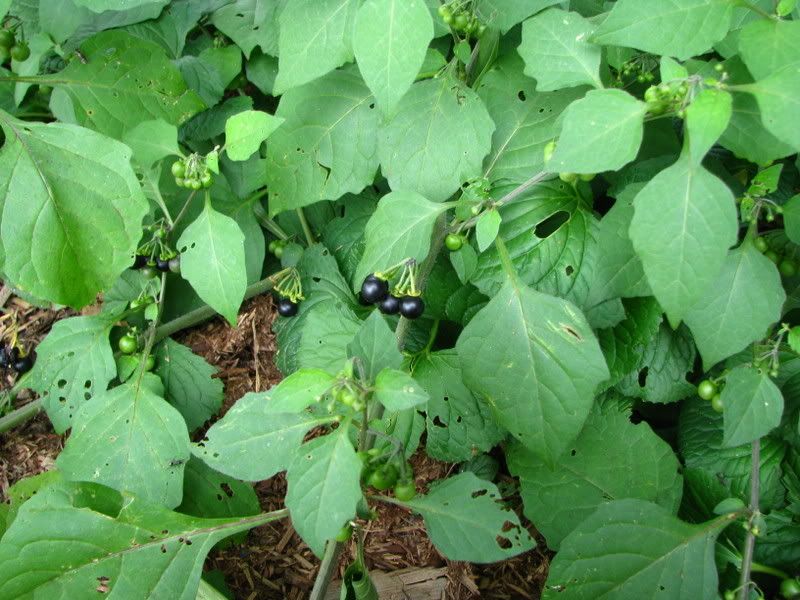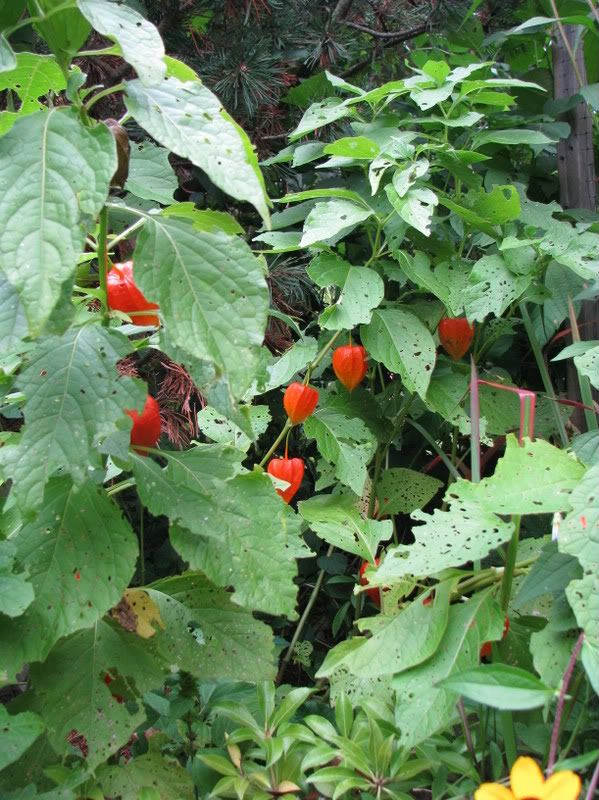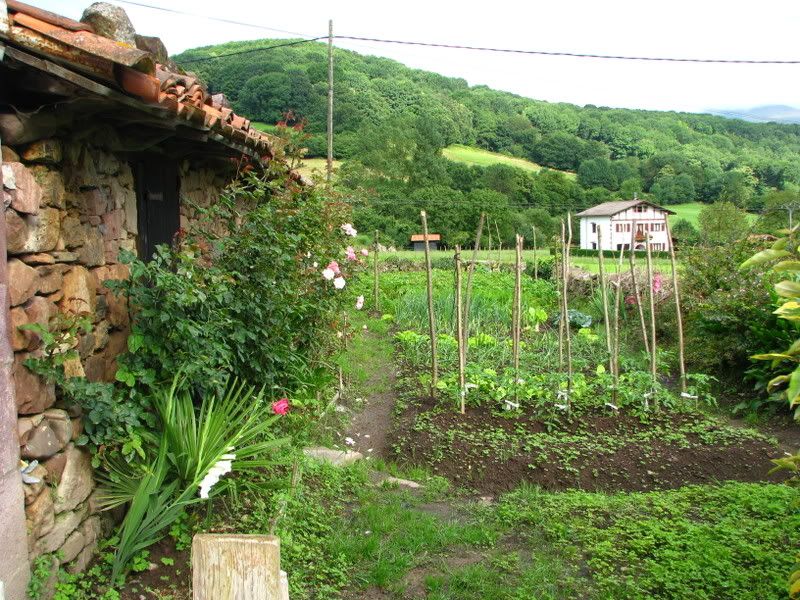1) Native
2) Beneficial to beneficials, or
3) Edible or otherwise useful
I'm afraid that the following plants only qualify for the fourth rule-breaker rule:
4) Too pretty to take a shovel too.
Japanese Anemome
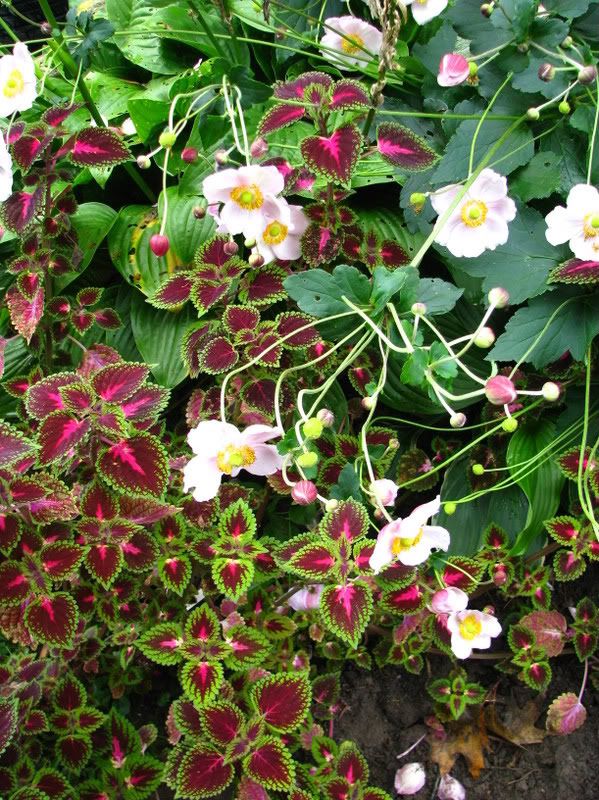
Here featured with a common coleus. The coleus is not winter hardy but roots easily from cuttings.
I cannot get rid of this gorgeous flower even though it did originate in... well a nurseryman's test plot - these are people-made. It is a member of the buttercup family and therefore not even edible!
Chrysanthemums
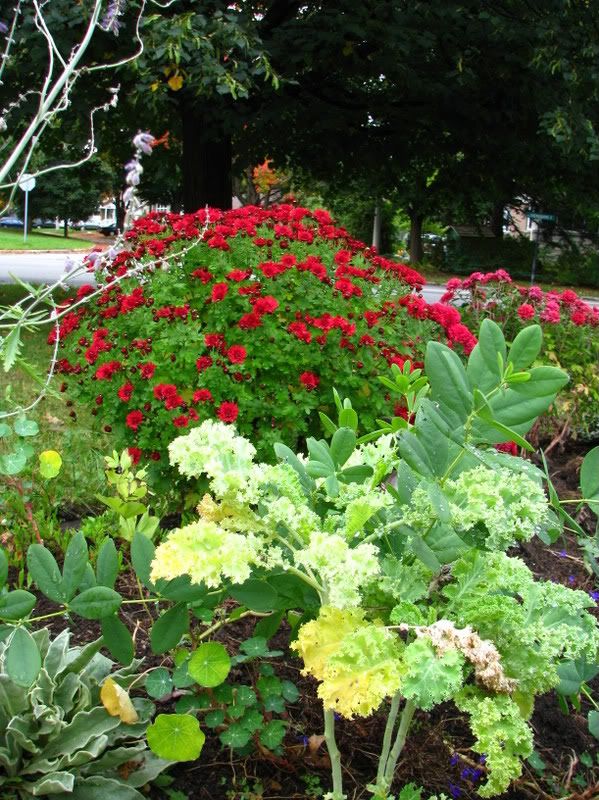
The background to Scottish curley kale and 'blue false indigo' which has yet to flower for me. Next year?
Nothing adds colour late in the season like this plant. It's brilliant reds, yellows, pinks and purples, complement the fall leaves. "Hello sugar maple, you look magnificant in that colour of red." "And why you Mum look fabulous. What is that burnt orange?" They are edible - specifically the variety Chrysanthemum coronarium - and are probably a late season nectar source so they squeak by in acceptability. Phew.
Aster

Wild aster.
Finally, a virtuous plant that is both a number 1 and 2! It's quite pretty to boot and there are lots of showy cultivars out there. I have regular field aster which grows to over 5 feet in garden conditions. There are also lots of native asters.
Black Eyed Susan
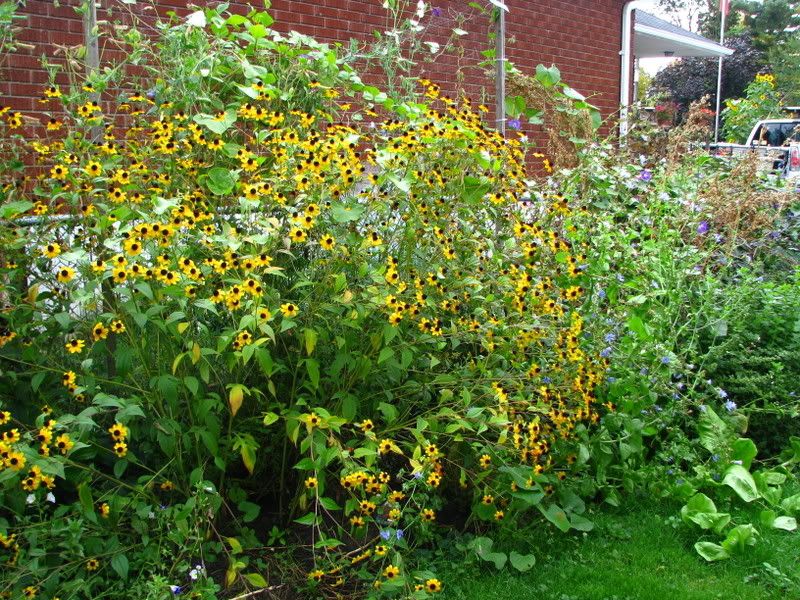
A crazy messy garden with self seeded sugarloaf chicory. You can see it popping out of the grass, lemon balm, and so on.
Another pat on the back for this self-seeding perennial. You could easily have yourself a field of aster and BES as I refer to it in my gardening notes. The wild type is a tall flower with a mass of charming, petite blossoms.
Obediant Flower
Still flowering, though nearing its end, this native also provides late season colour in the shade of pastel pink. This has one of those spreading rhizomes. You've been warned. Bees love it!
The leaves
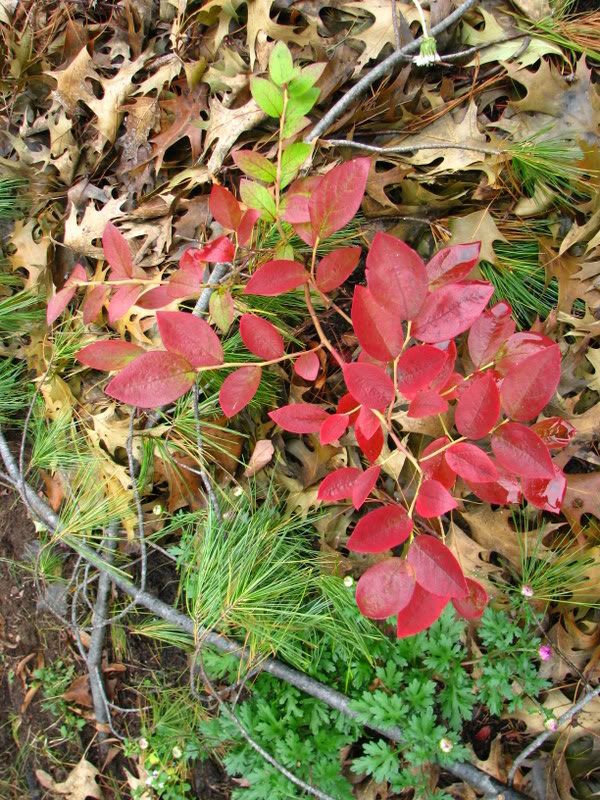
Blueberry bush with a pink chrysanthemum just unfurling its pink blooms.
In my garden, the most striking leaves so far are on the blueberry bushes, evening primrose, chokecherry, and the hibiscus. I mention the latter because it is an exotic ornemental so I was planning on getting rid of it until it did this:
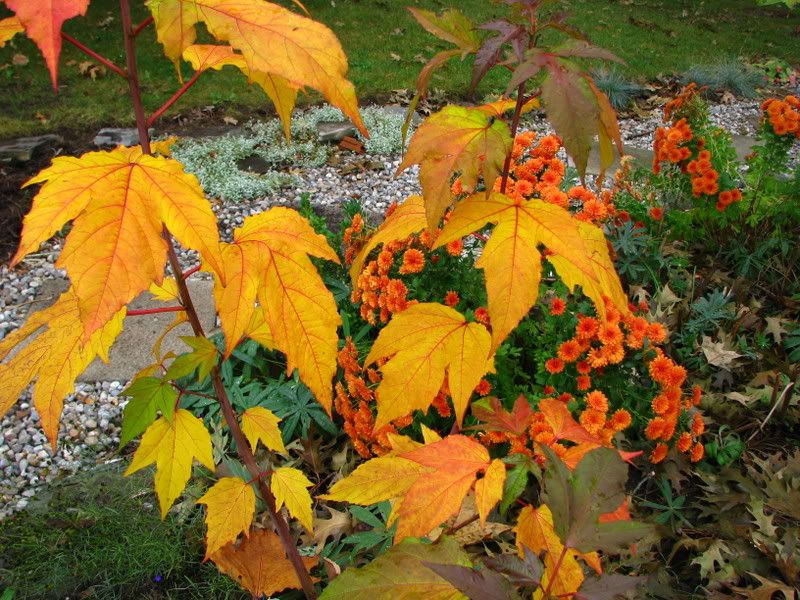
Hibiscus showing off.
How can I get rid of the fire plant?
I then read that the leaves are 'technically' edible. This is also true of Rose of Sharon leaves, and I am guessing Okra. I should really look into this more closely. Hmmm, probably a number 4 plant?
***
Links:
Pickled mum flowers - I have 'no' idea what these would taste like.

